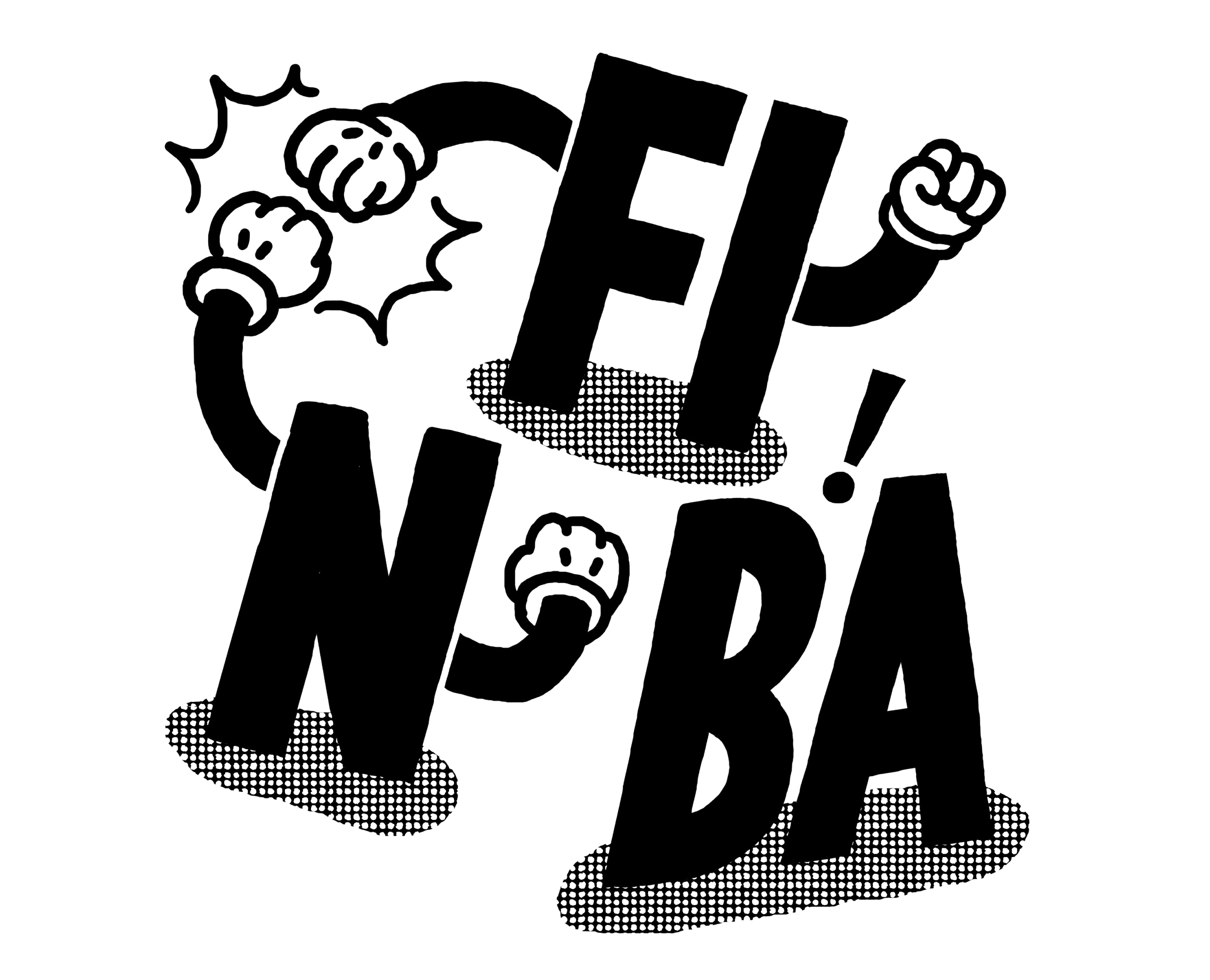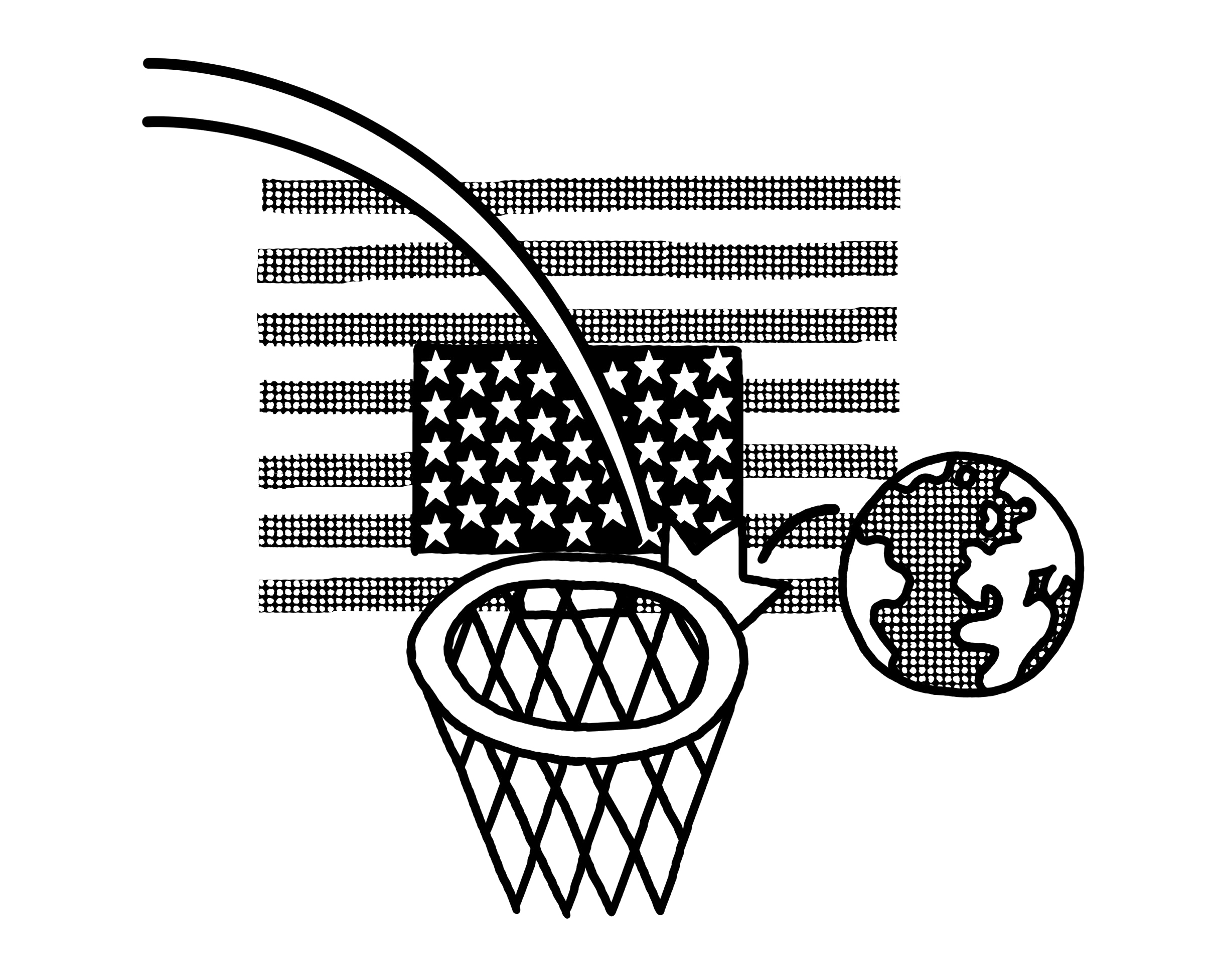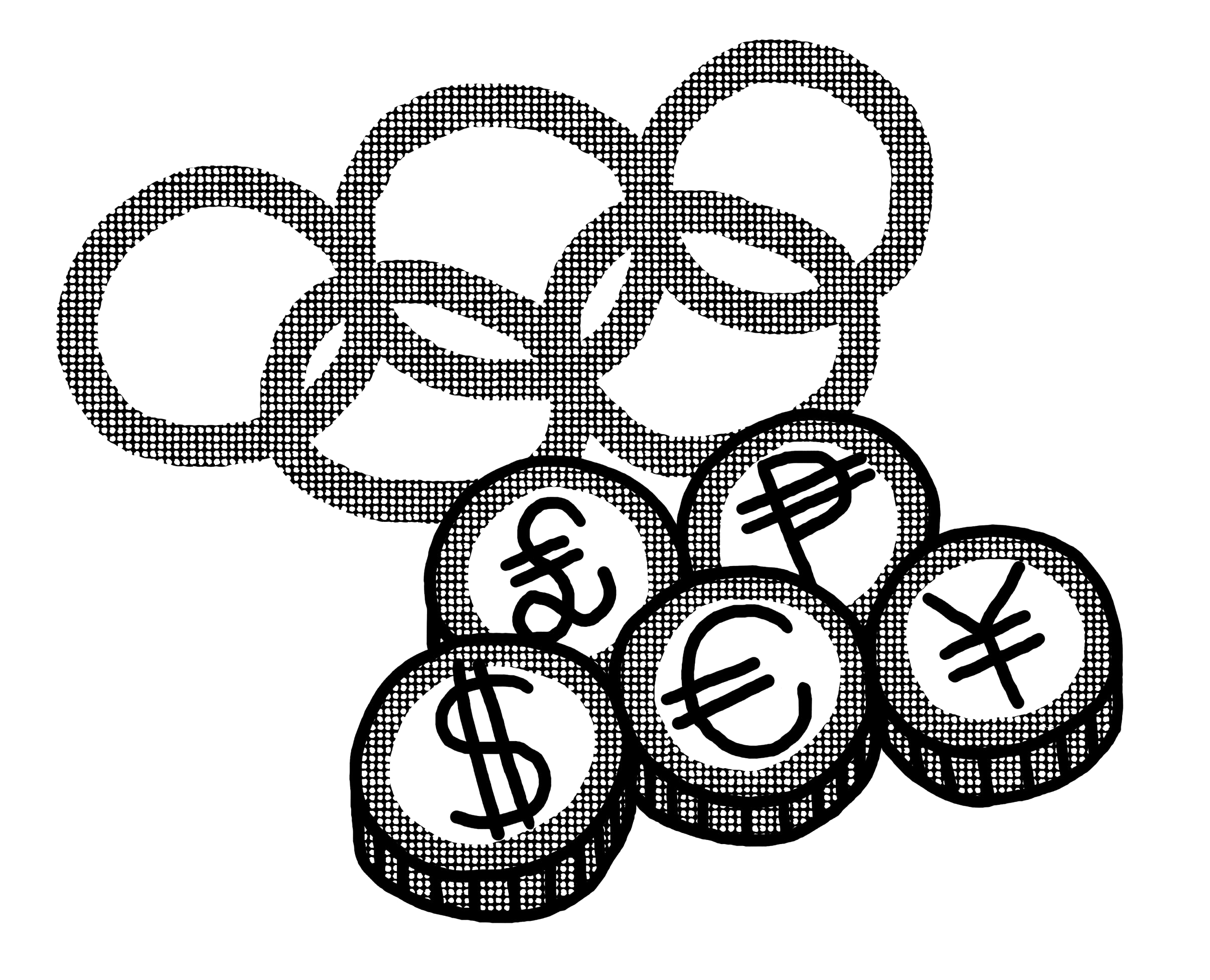USA! USA! USA!
Early 2015, and basketball behemoths Team USA look set to blow out anybody brave enough to take them on. LA-based writer Os Davis tells us why the rest of the world is hot on their heels.

2014 was supposed to be the year. At the conclusion of the FIBA World Cup, followers worldwide had anticipated a final match of Spain vs. the United States. We thought we’d see the game played on Spain’s home turf, so that Team USA might fall prey to a disadvantage for the first time ever in international competition. And perhaps in the aftermath, fans everywhere might marvel at this brave new world. We might assert that alternative global basketball powers had finally caught up with the inventors and dominators of the game.
Instead Spain, with their roster the end result of a steady evolution of teams featuring NBA and Euroleague stars stretching back to Juan Carlos Navarro’s inclusion for the 2000 Olympic Games, fell to their arch-rivals France in the quarterfinals.
In spite of their status as defending European champions, French team ‘Les Bleus’ proved they had been prematurely thrust into the limelight to face up to big, bad USA. They further disappointed at an already anti-climactic event by falling to unheralded Serbia in the semi-final round.
“Team USA’s NBA-filled roster made short work of the outclassed Serbia in the World Cup final, winning 129-92, and once again left an international tournament undefeated. Across the globe, the brief illusion of parity faded.”
The rest is now sports history. Team USA’s NBA-filled roster made short work of the outclassed Serbia in the World Cup final, winning 129-92, and once again left an international tournament undefeated. Across the globe, the brief illusion of parity faded, leaving behind an understanding that American basketball remained as dominant as ever. At present, the gap between the world’s number one programme and their contenders again looks unsurpassable – as though the clock had been reset to… Well, to virtually any era since international play began.
Hitting An All-Time Low
When it comes to tracing the historical roots of Team USA’s most recent showing, many will begin in 1992. Regardless of the end result of the 2014 World Cup, the event was always destined to serve as measuring stick for international basketball programs, and Spain’s in particular. For it was in ’92 that the heralded American Dream Team – still considered among the very greatest squads ever assembled in any sport – came to Barcelona for the Olympic Games, inspiring the host nation to morph its national basketball program into a true competitor in Europe and beyond.

Others seeking the beginning of USA dominance in modern-era Olympic play may point to the 1987 Pan American Games, which concluded with Oscar Schmidt going for 46 points and leading Team Brazil to a shocking 120-115 win over heavy favourites in Indianapolis. If any one game was a catalyst for the game-changing shift five years later, which allowed the professional athletes to compete in Olympics and World Cup tournaments, it was this one: Team USA’s first-ever undisputed loss in international play.
However, one need not go quite so far back into the annals of sport history to understand the USA’s most recent run. The truest encouragement for the United States to build (or, more accurately, rebuild) a mighty national team emerged from its deepest nadir. Namely the 2002 FIBA World Championship, held in… Indianapolis.
Just ten years removed from the ’92 Dream Team, Team USA presented the world with a side that was destined to flop. After an NBA player lockout forced USA Basketball to field ‘The Dirty Dozen’, a team consisting of American-born Euroleaguers for the 1998 FIBA World Championship, and then a squad made up of NJCAA players and coaches for the 2001 FIBA Americas tournament, the so-called ‘Nightmare Team’ constructed in ’02 included turn-of-the-millennium stars Reggie Miller, Paul Pierce, Ben Wallace, Elton Brand, Shawn Marion, Jermaine O’Neal and Antonio Davis, and was led by former NBA Western Conference champion coach George Karl.
“Crippled by the absence of a cohesive game plan by a ‘me first’ mentality on some players’ parts and with god-knows-what going on behind the scenes, the circumstances ultimately led to Pierce sitting out the team’s final match.”
Crippled by the absence of a cohesive game plan by a ‘me first’ mentality on some players’ parts and with god-knows-what going on behind the scenes, the circumstances ultimately led to Pierce sitting out the team’s final match. The USA finished a dismal sixth on their home court. The three losses from nine games represented the most a Team USA had suffered in a FIBA world tournament since 1978.
As far as US audiences were concerned, things took a turn for the worse in the 2004 Olympics. This time out, Larry Brown, mastermind behind the Philadelphia 76ers’ NBA Eastern Conference championship in 2000-01, was at the helm as coach. Brown brought his 76ers leader Allen Iverson with him, as well as Tim Duncan and sole ’02 returnee Shawn Marion, along with youngsters Lebron James, Carmelo Anthony, Dwyane Wade and Amar’e Stoudemire. The final result was one that was becoming frighteningly familiar in the US. Three losses, including an embarrassing 19-point defeat at the hands of Puerto Rico, led to a comparatively disappointing bronze medal finish.
(Re-)creation of a Monster – 2005
The truly key events in understanding what USA Basketball – and in turn, international tournament play – has become, did not take place on the court, however, but rather in personnel offices stateside.
In the summer of 2005, Jerry Colangelo was named director of USA Basketball after having served as Phoenix Suns president and general manager for a staggering 36 years. In October, famed Duke University head coach and original Dream Team assistant coach Mike Krzyzewski was signed to a four-year deal with Team USA.
Both of these signings have proven far more important than the appointment of any single player to wear the Team USA colors. By the time of the October 28 press conference which announced Krzyzewski as the national men’s basketball team coach, words like ‘commitment’ and ‘long-term’ had been well bandied about by Team USA officials. At that time, Krzyzewski said that he looked forward to “the opportunity to develop the team that will represent our great country in its own sport…” The crucial word here being ‘develop’.

At that same press conference, USA Basketball President Val Ackerman enthusiastically stated that he was “proud to unite the best of professional and college basketball, as we look to reclaim our dominance in both World Championship and Olympic competition.”
Colangelo remains the national program’s director to date. Krzyzewski was re-upped on four-year deals in 2009 and ’13. The stat consistently updated and trotted out both in the organization’s PR and by national television broadcasters is Team USA’s record result of 61-1 from the Colangelo/Krzyzewski era – a blaring indication that the reclaiming of American dominance which Ackerman envisioned in 2005 has come to pass – and shows few signs of letting up.
In addition to little factors such as the actual talent on the floor, the continuity provided by Colangelo and Krzyzewski firmly solidifies Team USA back in the top spot on the podium. Add in Syracuse University head coach Jim Boeheim’s ten years as head of the selection committee for the USA’s youth teams, and the message is clear: while the rest of the world’s national programs ultimately seek to compete with Team USA on the court, the Americans have already quietly assimilated the competition’s best practices of organized basketball.
To put it another way, the rest of the world may not have caught up with Team USA, but they have caught up with a Team USA hastily slapped together with those NBA stars willing to play for a summer with minimal game plan.
“The rest of the world may not have caught up with Team USA, but they have caught up with a Team USA hastily slapped together with those NBA stars willing to play for a summer with minimal game plan.”
Coach K’s first squad was a frightening harbinger of teams to come: LeBron James, Dwyane Wade and Carmelo Anthony returned to the team, while next-generation greats Dwight Howard, Chris Bosh and Chris Paul committed for the 2006 FIBA World Championship and beyond. Further, the inclusion of Shane Battier and Kirk Hinrich as role-playing specialists indicated that Krzyzewski sought to fill his version of the Team USA roster with complimentary players rather than 12 all-stars unable to gel.
The results weren’t immediately perfect. Team USA was shocked by Greece 101-95 in a semi-final shoot-out in the World Championship. September 1, 2006, would soon prove to be the last time the USA was on the losing end of the scoresheet, however. In ’07, Team USA cruised through the field in the FIBA Americas tournament, going a solid 10-0 to qualify for Olympic play. In the 2008 Olympics, the so-called ‘Redeem Team’ finally bagged the USA’s first gold in a worldwide tournament since 2000.
And Krzyzewski’s hand-picked leaders would be back for more: James ultimately competed in five international tournaments for Team USA; Anthony, four; Bryant, Wade, Howard and Bosh all three.
Colangelo and Krzyzewski haven’t completely avoided all difficulty in compiling the Team USA roster annually, but have succeeded remarkably when so challenged. When for various reasons the aforementioned bunch were unable to compete for Team USA in the 2010 FIBA World Championship, Colangelo and Krzyzewski brought aboard another wave of growing talent. Kevin Durant, Kevin Love, Derrick Rose, Russell Westbrook and Rudy Gay were among those suiting up for the US for the first time. Not only were the results in ’10 predictable, but Team USA found itself in the enviable position of being able to combine the best of the previous two monster squads for the 2012 Olympics.
And so it came to pass that the 2012 side finally reminded those who remember of the original Dream Team – despite the scare from Spain in the gold-medal game.
The Threat of the Future
In 2014, the third incarnation of Team USA since Krzyzewski took his post romped through the FIBA World Cup field with the NBA superstars of the decade. Team Finland head coach Henrik Dettmann went so far as to call this latest incarnation of Team USA3 “the best USA team I have ever seen” in an interview with the weekly international basketball podcast Taking the Charge, and he’s been a national team coach since 1997. Still, the hope of derailing the Team USA machine is currently stronger than ever, despite a four-gold run in FIBA and Olympic events.
“Team Finland head coach Henrik Dettmann went so far as to call this latest incarnation of Team USA ‘the best USA team I have ever seen’ in an interview with the weekly international basketball podcast Taking the Charge, and he’s been a national team coach since 1997.”
The world’s basketball fans should look elsewhere than roster sheets, however. The challenge to USA supremacy is unlikely to come from exciting-looking sides like Brazil, Croatia and Canada, nor from the continually competitive programs of the 2014 World Cup’s second, third and fourth-placers, Serbia, France and Lithuania. Even the old sports cliché ‘the only team that can beat them is themselves’ cannot fairly be used, as the superstar egos which killed the Nightmare Team have been managed expertly since 2006.
Instead, going forward Team USA’s main competition will be FIBA itself. In late 2012, the FIBA Central Board announced its reworking of the current format for qualifying to international tournament play. These changes will go into effect following the 2016 Olympic Games, for which Team USA has already qualified by dint of its World Cup win. In a radical shift from previous tournaments, the traditional summertime continental championships (the FIBA Americas tournament, Eurobasket, etc.) will be made into ‘dead-end’ competitions, with winners no longer receiving automatic bids for the following World Cup or Olympic tournament. In addition, Olympic gold medal-winning teams will not directly qualify for subsequent FIBA World Cups.
Qualifying tournaments for future FIBA and IOC events will instead be held in a staggered format, with a handful of games scheduled for national teams in November, February, June and September – all but the last directly in conflict with the NBA schedule.
The immediate implications are evident: one untimely upset in the 2019 World Cup means that Team USA will need to somehow assemble a team to play abroad amid the NBA season or playoffs, potentially with someone other than Krzyzewski at the helm, assuming he maintains his professional duties at Duke. As FIBA Secretary General Patrick Baumann explained during the World Cup, the new format is “not going to be easy for everybody. Some [national basketball federations] will have more challenges than others.”
Even should Colangelo & Co. manage to coerce a competitive twelvesome to play for the USA in such qualifying tournaments, there’s still the matter of convincing NBA franchise owners of the importance of letting their multimillion-dollar investments risk injury during a February match in, say, Santo Domingo or Caracas. Going into this month’s NBA owner’s meeting, the anti-international game forces are already arming their arguments against such risk.
In the aftermath of Paul George’s injury, which will reportedly keep him off the court for the majority if not all,of the 2014-15 season, Dallas Mavericks team owner Mark Cuban proclaimed that “the [International Olympic Committee] is playing the NBA. The IOC is an organisation that has been rife with corruption, to the point where a member was accused of trying to fix an Olympic event in Salt Lake. The IOC [pulls in] billions of dollars. They make a killing … The pros in multiple sports are smart enough to not play when they are eligible free agents. But teams take on huge financial risk so that the IOC committee members can line their pockets. The greatest trick ever played was the IOC convincing the world that the Olympics were about patriotism and national pride instead of money.”

In a country where money speaks particularly loudly, can one really imagine an NBA franchise giving up its star player, for up-to ten percent of a season in exchange for no material gain? Such acceptance would certainly require a shift in mentality. Dramatically more radical than the FIBA tournament makeover itself.
So while Team USA may currently be enjoying a run of dominance unprecedented in the modern era which is likely to continue through the 2016 Olympics, the seeds of potential dissolution have already been planted. In 2018, the world’s perhaps unfounded musings about whether viable competition for the USA exists will be allowed to reemerge; soon thereafter, parity may yet reach international tournaments.
Someday, perhaps sooner than we think, Team USA will be knocked from the undisputed topspot in the game it invented. It only takes one game to flip a decades-old paradigm: after all, consider what international fandom would be saying today if we’d gotten the World Cup final we’d expected in 2014…
Illustrations: Paul Layzell
Words: Os Davis